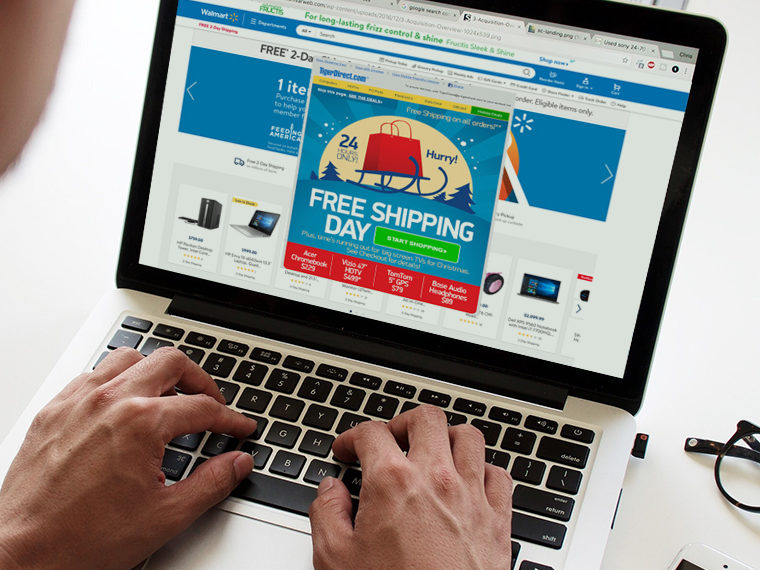Cards redeemable only at a favorite store beat adding a second, less-loved retailer
From a marketing standpoint, offering a consumer an additional free item to go with purchase would seem like an easy win. Yet more is not always better.
A 2012 paper established the “presenter’s paradox”: When something of high value is paired with something of lower value it reduces the overall perceived value of the package. Purchasing a smartphone and receiving a highly valued cover for free is perceived as being a better deal than buying the same phone, having the same cover tossed in for free and also getting a free download of an app you don’t especially care about.
UCLA Anderson’s Stephen Spiller and Duke University’s Dan Ariely expand on this paradox in the realm of gift cards, which present an explicitly easy-to-grasp market value.
Opt In to the Review Monthly Email Update.
Here, too, the potential uses of a given card impact its perceived value. Spiller and Ariely find that if the gift card can only be used at a store that someone really likes, its value will be perceived as being higher than a gift card that can be used at that same store, as well as at another store that isn’t as highly valued. That is, if you’re a die-hard Walmart customer, you will value a $100 gift card to Walmart more than a $100 gift card that can be used at Walmart or its corporate sibling, Sam’s Club.
“The perceived value of a medium of exchange depends on the set of uses available, not just the best use,” Spiller and Ariely explain in a paper forthcoming in Organizational Behavior and Human Decision Processes. Even though the entire value of the card can be used at a subject’s favored retailer, inclusion of a less-favored retailer leads the subject to, in effect, mentally “average” the value of a card at each retailer, it seems.
This isn’t about choice overload, a well-known behavioral issue wherein too many options lead to suboptimal decisions. In a gift card experiment that was part of their research, Spiller and Ariely specifically limited the choice to two possibilities: a card that could be used at a desired retailer, or a card of equal value that could be used at that retailer as well as one other retailer. Moreover, it’s widely established that we indeed like having some choice, not no choice; so that’s not the culprit for the misvaluation either.
What Spiller and Ariely empirically show is that when a person is presented with gift card options of equal maximum value and the rational decision is to view them, well, equally, we don’t. When a lowly valued option is thrown into the mix, it effectively pulls down the overall perceived value.
In an online experiment with more than 1,000 participants, a highly valued solo-use card was assigned a higher perceived value than a dual-use card when the second use was of lower value to the subject.
Participants rated how much they would like a gift card to each of several different individual retailers (such as Pottery Barn, Williams Sonoma, Walmart, Sam’s Club). The experiment then sorted the participants into two groups: The “narrow use” group was run through questions based on what they would pay for a single-use gift card to the retailer from a pair they rated higher (for example, Pottery Barn for people who rated Pottery Barn higher than Williams Sonoma), and the “broad use” group would be asked to consider a card that could be used at two retailers (Pottery Barn and Williams Sonoma). People in the narrow use group evaluating single-retailer gift cards were willing to pay about 6% more than those in the broad use group that evaluated dual-retailers gift cards.
Spiller and Ariely’s analysis also determines when the effect is bigger or smaller. The magnitude of the gap between the most-liked retailer and its less-liked corporate kin impacts the level of undervaluation of a broad-use card. When the spread between a participant’s ratings of two cards increases, so does undervaluation. Once people are prompted to think it through, they apparently understand that adding a less-valuable alternative can be ignored.
While corporate hookups and their promised synergies are a favorite C-suite strategy, this research suggests caution is in order when creating marketing packages that play across divisions.
For a brand’s most loyal shoppers, adding on less-prized options simply because they are under the corporate umbrella seems to diminish the overall perceived value. It also provides additional fodder for choice architects in other realms to consider when building decision-tree systems. When a strong preference is known, muddling it with a lowly regarded option — even when free — can have unintended consequences.
Featured Faculty
-
Stephen Spiller
Professor of Marketing and Behavioral Decision Making
About the Research
Spiller, S. A., & Ariely, D. (in press). How does the perceived value of a medium of exchange depend on its set of possible uses? Organizational Behavior and Human Decision Processes, 161, 188–200. doi: 10.1016/j.obhdp.2020.07.005






